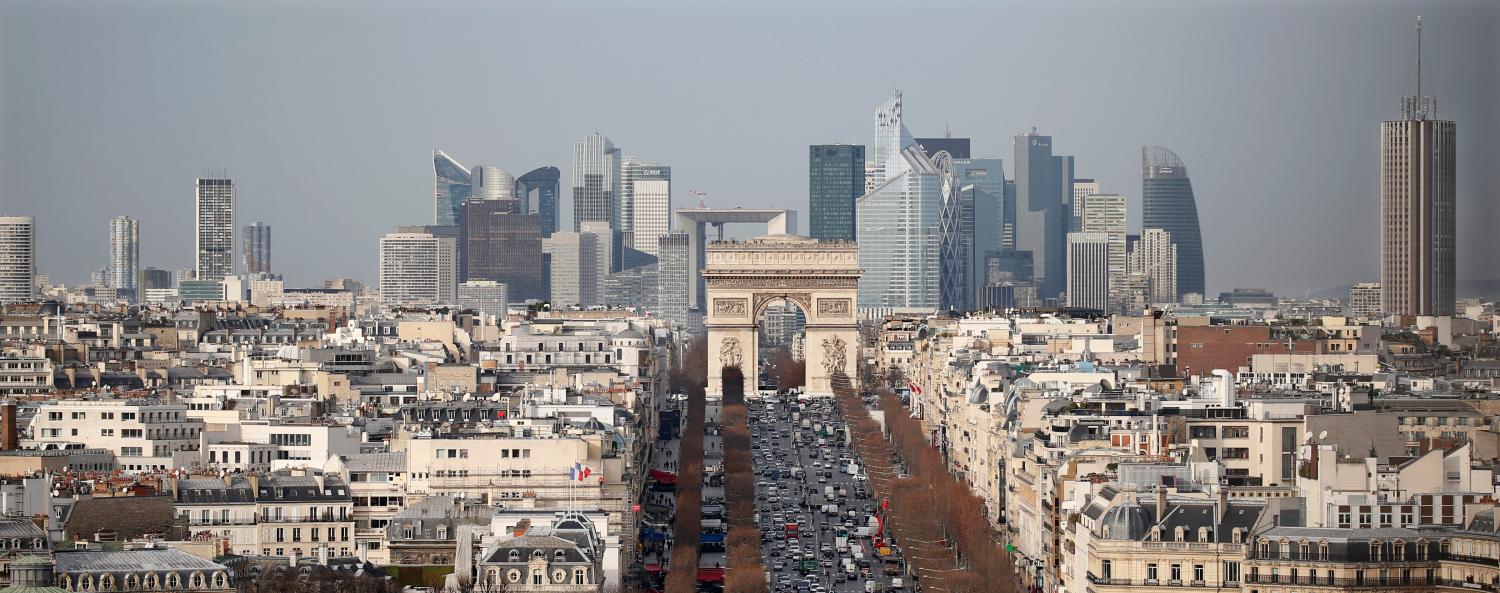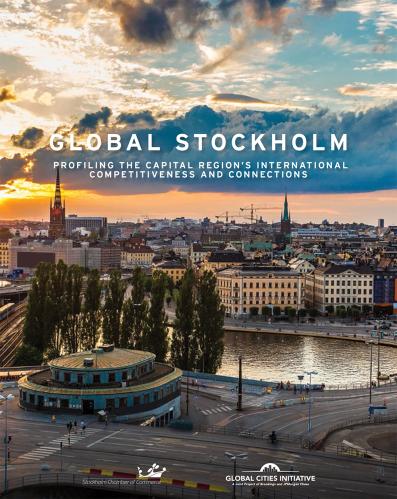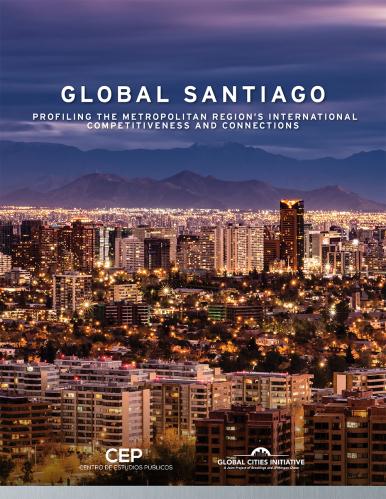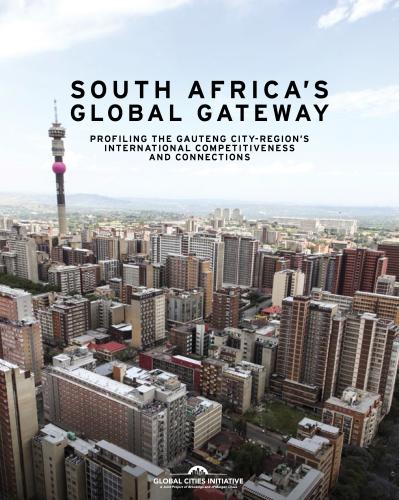EXECUTIVE SUMMARY
In imagination and in fact, Paris is a quintessential global city. It has been one of the world’s most visited places for centuries, and its economy prospers today thanks to a well-educated workforce, modern infrastructure, and global niches in creative industries, business services, and tourism. Yet, facing new pressures related to globalization, technological disruption, and demographic change, the region’s growth has lagged relative to global peer regions that share its economic size, wealth, and industrial structure. To deliver economic opportunities for its residents, Paris must boost growth.
This report, developed as part of the Global Cities Initiative, a joint project of Brookings and JPMorgan Chase, provides a framework for leaders in the Paris region to sustain the region’s prosperity and to better understand its competitive position in the global economy. The report offers information and insights on Paris’s global economic position by benchmarking the region against eight global peer regions based on economic size, wealth, productivity, industrial structure, and competitiveness.
Findings
Paris is a wealthy city-region, but its economy is growing slowly relative to other major global cities.
The Paris regional economy, defined as a metropolitan labor market slightly larger than the Île-de-France region, housed 12.5 million people in 2015 (19 percent of France’s population) and generated $818 billion in output (31 percent of national gross domestic product, or GDP). Paris is the fourth-largest metro economy in the world and boasts the fifth-highest average wealth (GDP per capita) among the world’s 120 largest global city-regions. Paris is prosperous, but stalled growth is limiting increases in that prosperity. Jobs and GDP have increased at a slower rate than in global peer city-regions. Average GDP per capita is growing at such a pace that it will take nearly a century for living standards in Paris to double. Income gains from that growth have been more broadly shared than in major U.S. cities or in London, but those gains have been so minimal that the average household’s disposable income has actually slightly declined over the last 15 years. In a composite economic performance index, Paris ranks fifth in comparison with its eight global peers.
The Paris region can take advantage of changing market, technology, and demographic trends, but it must focus on the core drivers and enablers of competitiveness.
A competitive region is one in which firms can compete successfully in the global economy while supporting high and rising living standards for local households. Globally competitive traded sectors, functioning innovation ecosystems, and skilled labor are the key drivers of overall productivity, employment creation, and income growth. Two enablers support these three drivers: well-connected, spatially efficient infrastructure and a reliable governance structure and business environment.
The Paris region contains notable strengths and significant opportunities to better deploy these five factors—trade, innovation, talent, infrastructure, and governance—to increase its global competitiveness:
-
TRADE
Paris specializes in a diverse set of tradable industries—from financial and business services to advanced manufacturing to creative industries—but is limited by low participation of small and medium-sized enterprises (SMEs) in trade.
Unlike some of its peers, Paris has a diversified global presence in financial services, multinational firm headquarters, advanced manufacturing, and international tourism, culture, fashion, and media. These industries tend to drive growth in jobs and value-added, exports, and foreign direct investment. However, most firms are not globally engaged; French SMEs account for 44 percent of value-added but only 16 percent of exports. In a composite trade index, Paris places fourth among peers.
-
INNOVATION
Paris accounts for significant shares of national research and development (R&D), patents, and venture capital, but it is not yet on par with other leading innovation hubs.
Paris is the center for innovation in France. It houses world-class research universities, agglomerations of high-tech employment, patent-intensive multinational companies, and high levels of R&D spending. Yet, as compared to its global peers—some of the most innovative places in the world—Paris lags on metrics such as patenting intensity, industry collaboration on scientific research, and venture capital attraction. In a composite innovation index, Paris ranks second to last among peers. Nonetheless, significant recent growth in the patenting output of local firms and research institutions bodes well for the Paris region’s innovation potential.
-
TALENT
Paris is one of the most educated regions in the world, but it has higher unemployment than peer regions.
The Paris region’s high levels of human capital remain a critical asset. Sectors of the economy that employed high levels of professionals and university graduates accounted for most of the job growth in the region over the past decade. In fact, despite accounting for only 24 percent of the workforce, professional occupations accounted for nearly all net job growth during that time. As they demand more skilled labor, local firms are placing new demands on existing education and training systems. Continuing to produce more high-skill workers and attract talent from both domestic and international sources will prove necessary in order to jumpstart growth and counter high unemployment, particularly among youth. In a composite talent index, Paris places sixth among global peer regions.
-
INFRASTRUCTURE
Paris’s transportation and digital connectivity are strong, but it must continually invest to address bottlenecks.
The region is a major aviation hub, but growing strain from passenger flows at Charles de Gaulle International Airport warrants further investments. The region’s digital connections are fast and wide-reaching, supporting efficient communication between Paris and other economic hubs. However, physical infrastructure bottlenecks remain, especially in public transit in outlying areas, logistics, and housing supply. While Paris’s core is better connected by public transit than any peer metro area, its transit system is much less comprehensive in suburban communities. It is relatively more expensive to ship goods out of Paris than other markets. Housing remains expensive, even as compared to other global cities, although the region has been able to increase the supply of new housing over the past year. In a composite infrastructure index, Paris ranks third among peers.
-
GOVERNANCE
Satisfaction with government services is in line with peer countries, but the region’s business and regulatory environment is more restrictive than in city competitors.
The Paris region operates within a more centralized government structure than its peer cities in the United States, which means it will naturally have less fiscal and spending authority. The Île-de-France region has made admirable attempts to consolidate its highly fragmented municipal structure, but public goods and services are still delivered in a relatively fragmented setting, and this mode of governance likely limits efficiency and lowers overall local productivity. Government services are high quality, but they could likely be delivered in a more coordinated and efficient fashion. The region can make improvements around the business and regulatory environment. The World Bank’s Doing Business project, which assembles its analysis from the perspective of a firm located in the largest city in the country, suggests that Paris’s business environment lags those in places like Amsterdam, London, Los Angeles, New York, and Tokyo.
This profile benchmarking Paris against its international peers coincides with the Île-de-France Regional Council’s efforts to create a new economic strategy to help solidify the Paris region’s core economic strengths and address outstanding challenges. The Paris region is well-positioned to act on these findings, and we recommend the region pursue its strategy using the international lens deployed in this report. Such a strategy would acknowledge that the Paris region’s tradable industries, which are engaged in the global marketplace for trade and talent, are the ultimate drivers of Paris’s growth. And with its comparative advantage residing in technology-intensive portions of the economy, Paris must focus particularly on supporting its regional innovation system and preparing workers to participate in these expanding sectors. Investments and reforms to the region’s infrastructure and governance, respectively, also could help enable the region’s competitiveness. By taking purposeful action now, the Paris region’s public, private, and civic institutions can build a globally competitive economy that works for all.
Summary of Paris’s performance and competitiveness factors









